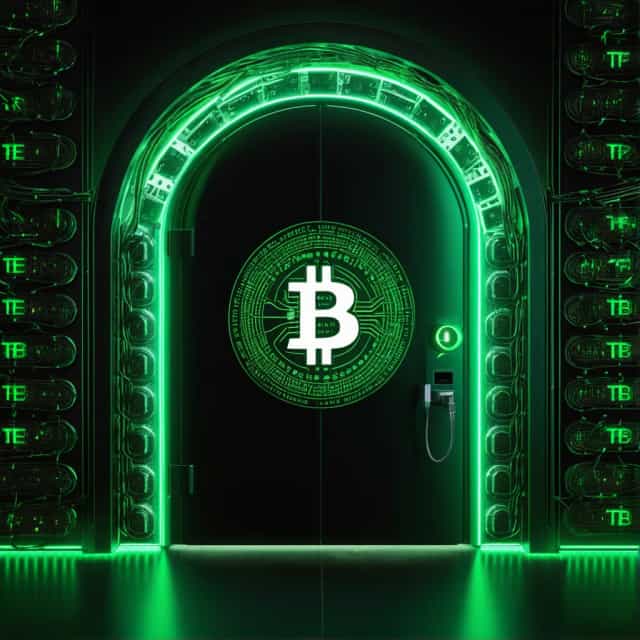
Image source: Block Media
Russia Embraces Stablecoin A7A5 as Legal Digital Asset for Cross-Border Transactions
Russia has officially designated the ruble-pegged stablecoin A7A5 as a digital financial asset (DFA), paving the way for its integration into cross-border payments. This groundbreaking move is expected to enable Russian businesses to bypass Western financial sanctions, facilitating international trade through decentralized technologies. The acknowledgment of A7A5 represents the first instance of a stablecoin being fully compliant with Russia’s current legal framework for DFAs.
What Are Digital Financial Assets in Russia?
Under Russian regulations, digital financial assets are defined as tokenized equivalents of real-world assets operating on private or decentralized blockchain networks. These assets provide legally viable methods for transactions in export and import operations. A7A5's recognition signifies a shift in Russia's financial strategy, leveraging blockchain technology to establish new trade channels and avoid international penalties associated with geopolitical tensions.
According to RBC, a trusted business media outlet, DFAs hold distinct definitions in Russia, offering businesses a secure and efficient avenue to conduct transactions.
Issuance and Operation Standards for A7A5 Stablecoin
The issuance of DFAs is restricted to information system operators approved by the Central Bank of Russia. Currently, major players like Sberbank, Alfa-Bank, Atomize, and Tokeon hold the authority to issue such tokens. A7A5 entered the market in February 2025, initially launched in Kyrgyzstan. Its market capitalization presently stands at about 41 billion rubles ($500 million), highlighting its growing influence in the crypto finance sector.
Leonid Shumakov, the head of the A7A5 project, emphasized its transformative potential. He remarked that the stablecoin has already proven to be a reliable tool for conducting cross-border payments via blockchain. Shumakov expressed optimism that A7A5 would contribute positively to individual users, businesses, and the Russian economy at large, with opportunities for further expansion on the horizon.
Navigating Operations Amid Western Sanctions
A7A5 trades rely heavily on Tokeon, a digital asset platform operated by the Russian state-owned bank PSB (formerly Promsvyazbank). Both PSB and Tokeon are currently subject to Western sanctions. Even so, these entities have found ways to operate within the parameters of Russia’s digital economy, facilitating payments backed by PSB deposits—a mechanism seen by Western governments as key to circumventing sanctions amid Russia’s ongoing conflict in Ukraine.
To use A7A5, companies need to register as investors on the Tokeon platform and purchase stablecoins to execute transactions. Payment recipients receive these funds via blockchain networks such as Tron or Ethereum. Olga Mimyalina, a PSB representative, confirmed the successful completion of initial transactions. Meanwhile, Tokeon CEO Igor Yegorkin highlighted the platform’s Russian government backing, reinforcing the government’s commitment to expanding digital asset infrastructure despite external restrictions.
Ownership and Regulatory Compliance for A7A5
While the design of A7A5 stems from Russian firm A7, the stablecoin’s majority ownership belongs to Moldovan-born oligarch Ilan Shor, a fugitive holding a Russian passport. Recently, issuance responsibilities have shifted to Old Vector, a Kyrgyzstan-registered company asserting independent project operations. Despite concerns over leadership ties, A7A5 complies with Russian regulations and maintains its ruble peg, solidifying its legal status as a foreign digital asset (FDR).
The stablecoin's association with Kyrgyzstan has drawn scrutiny. A7A5-linked entities, such as Grinex—a Kyrgyz cryptocurrency exchange operating as an alternative to Russian platforms shuttered under U.S. sanctions—have faced regulatory hurdles. These sanctions targeted operations that aimed to bridge financial gaps created by restrictions on Russian exchanges. Nevertheless, A7A5’s alignment with Russian policies marks a significant regulatory milestone, allowing its stablecoin model to adapt to shifting geopolitical environments.
Russia’s Approach to Regulating Cryptocurrencies and Digital Assets
The recognition of A7A5 coincides with evolving regulatory efforts in Russia’s digital financial landscape. As early as September 2025, Russian financial authorities signaled intentions to regulate stablecoins and digital asset-backed securities. Experimentation with cryptocurrency-powered cross-border transactions has been underway, permitted within a specialized legal framework designed to explore blockchain’s potential in foreign trade operations.
Kremlin business advisor Boris Titov expressed confidence in the future role of cryptocurrency within Russia's economy. He projected the nation's cryptocurrency forex trading volume to surpass $12 billion in the first half of 2025—a testament to the growing reliance on digital currencies to offset the challenges brought on by financial sanctions.
Conclusion: A Bold Step Toward Financial Independence
Russia’s formal recognition of A7A5 as a digital financial asset represents a critical step toward economic independence and technological advancement. By leveraging blockchain infrastructure and stablecoin technology, the nation aims to reduce its reliance on conventional financial systems disrupted by geopolitical conflicts. While Western governments view this strategy as an attempt to bypass sanctions, Russia considers it a forward-thinking mechanism to safeguard its economy and foster international trade.
As A7A5 continues to gain traction, the integration of blockchain-based payment solutions highlights an ongoing global transition to decentralized finance. Russia’s actions here underscore the role of cryptocurrencies in reshaping economic strategies amid an increasingly polarized financial landscape.










